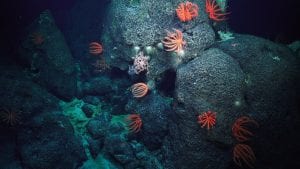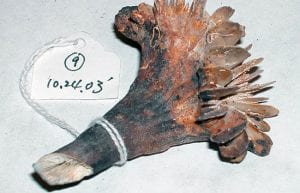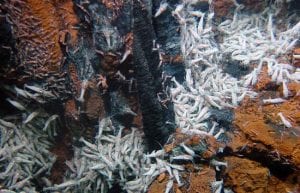Timothy M. Shank
Tim Shank grew up on the North Carolina Coast and has been fascinated with marine life for as long as he can remember. In the mid-1980s, his professors at the University of North Carolina discovered hydrocarbon seeps, sparking his interest in the evolution of life and chemosynthetic ecosystems. Shank heeded the advice of his marine geosciences professor and mentor, Dr. Conrad Neumann, who recommended that he study other passions, such as genetics or chemistry, and then apply them to marine science research. After graduation, he worked in the molecular genetic environmental toxicology lab at the Environmental Protection Agency in Research Triangle Park, N.C., honing his molecular skills for three years before entering graduate school at Rutgers University. He came to WHOI as a Postdoctoral Scholar in 1999. Shank’s research focuses on understanding the ecological factors that affect the structure of diverse populations of deep-sea chemosynthetic species. He combines molecular genetic approaches and ecological field studies to understand the conditions and adaptations that allow various species to migrate, evolve, and thrive in deep-sea habitats throughout the world’s oceans, including, more recently, seamounts. He has participated in more than 20 research cruises, using Jason and ABE, and has had more than 50 dives in Alvin. Shank’s thirst for evolutionary history extends into another passion: genealogical and American history.



